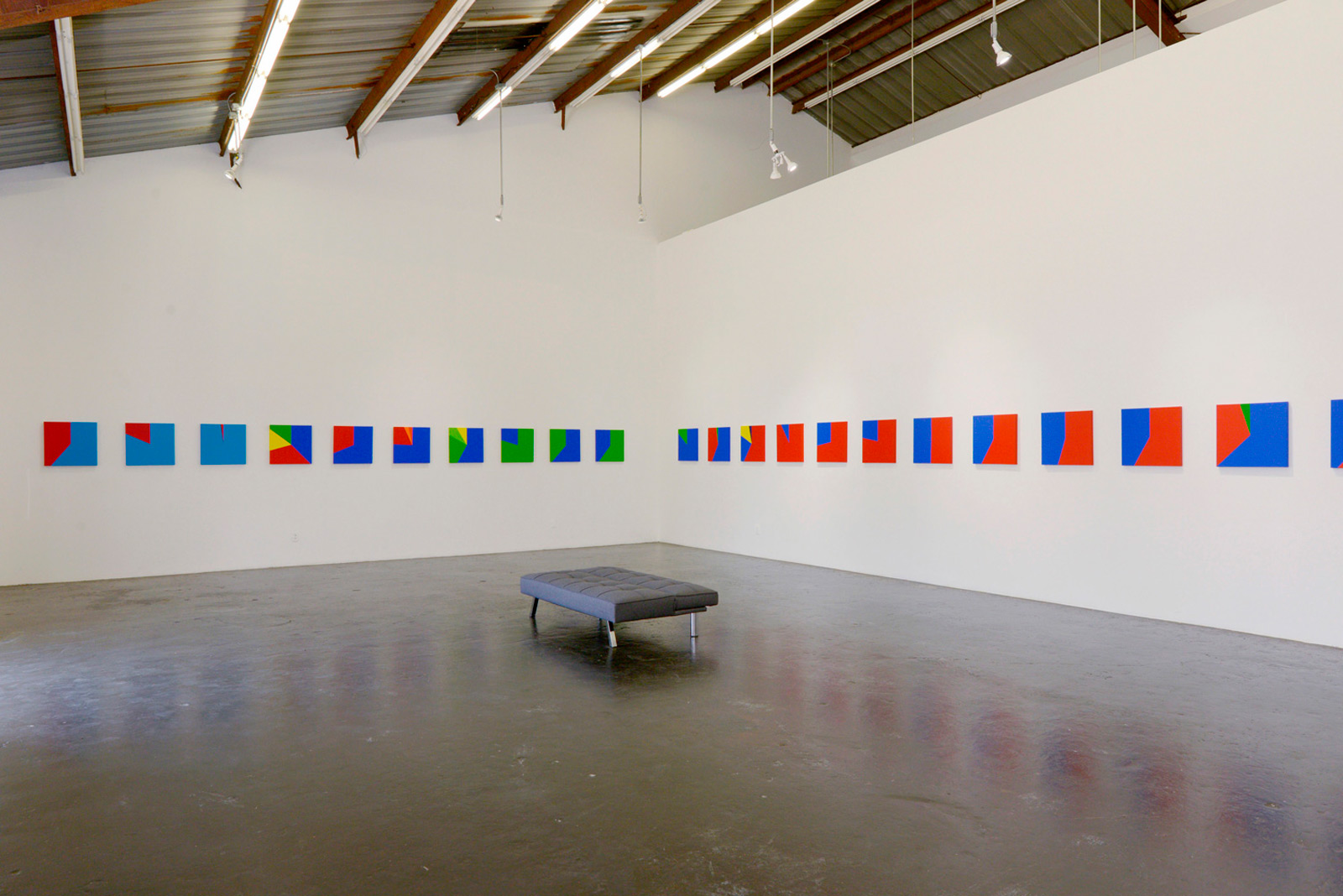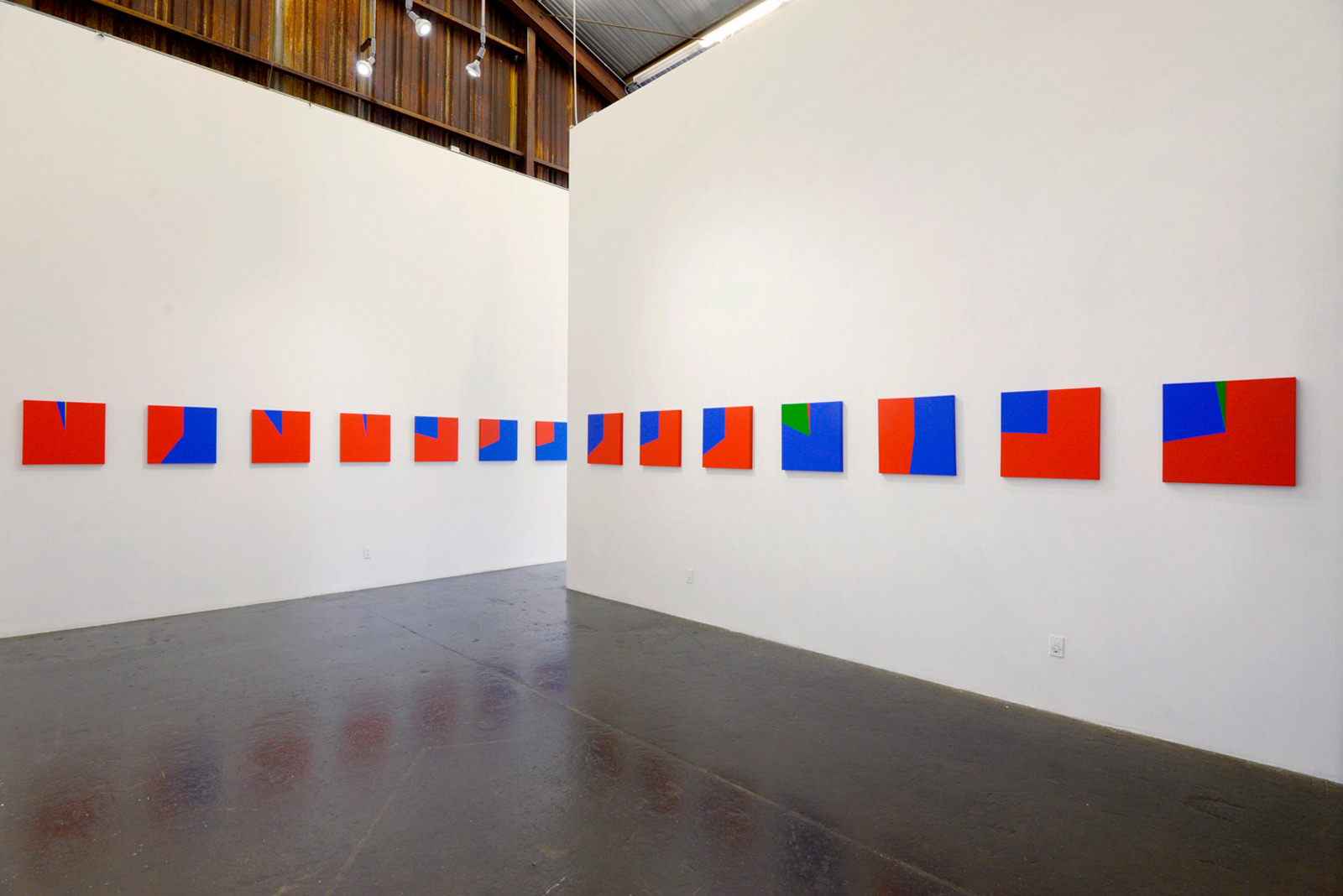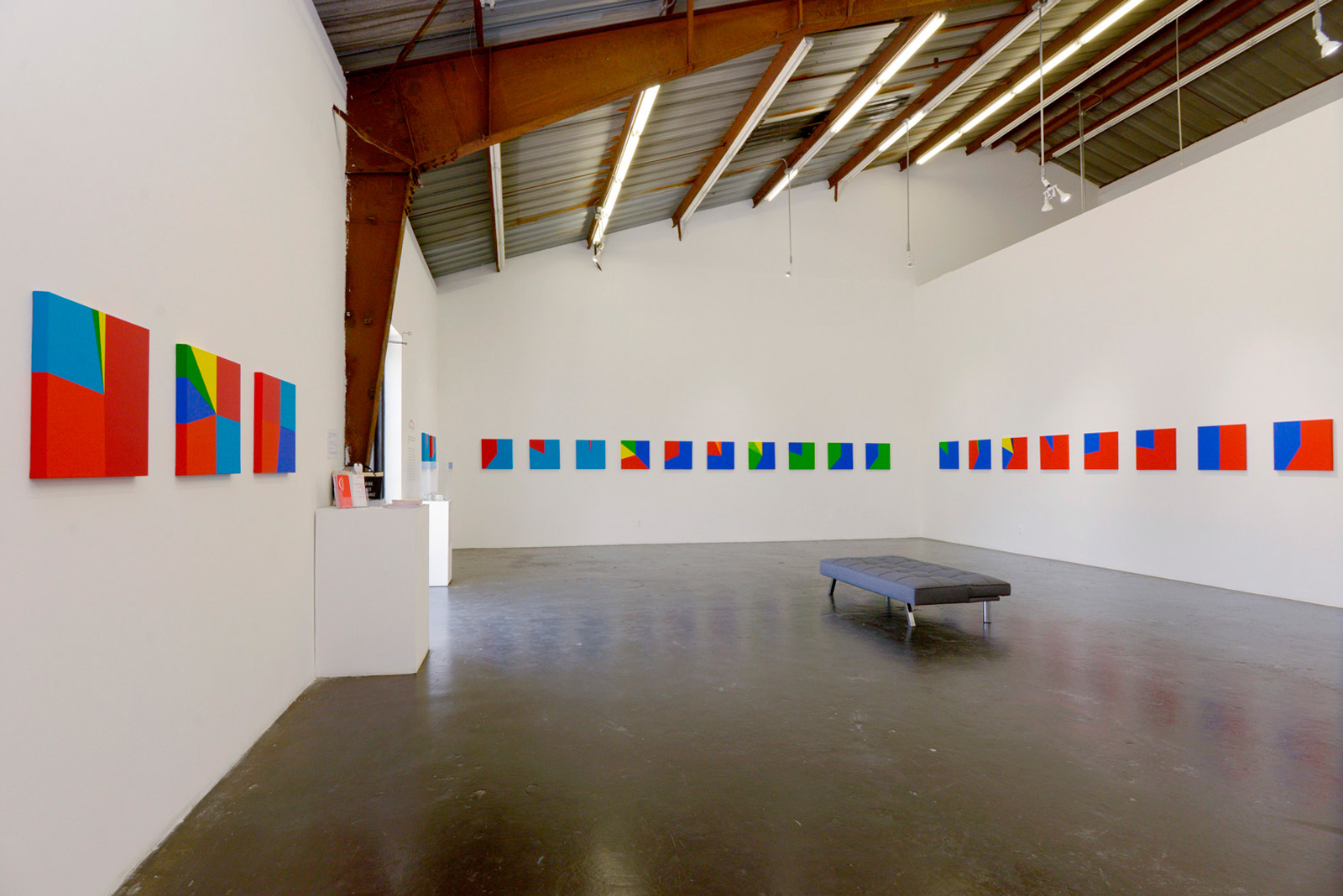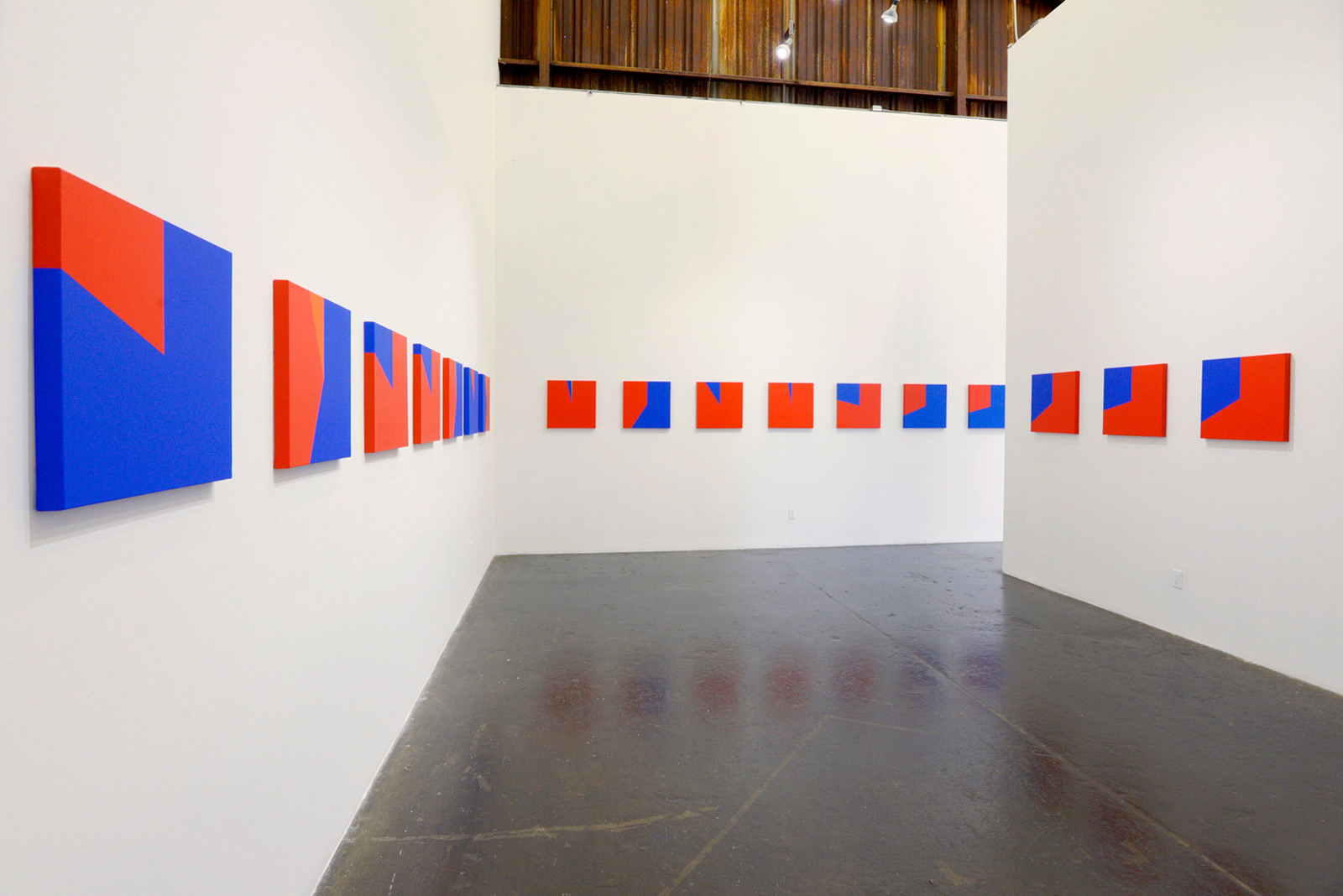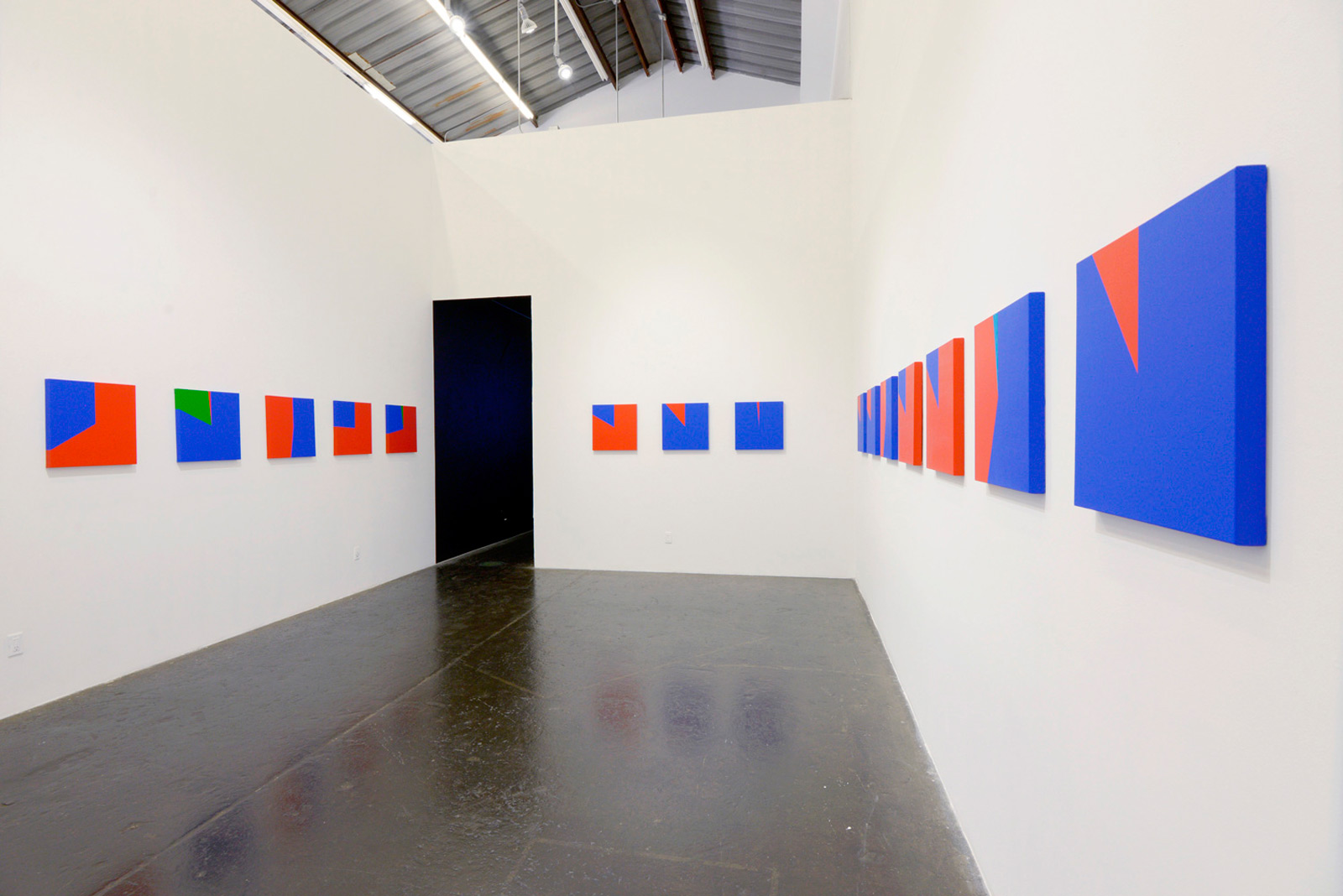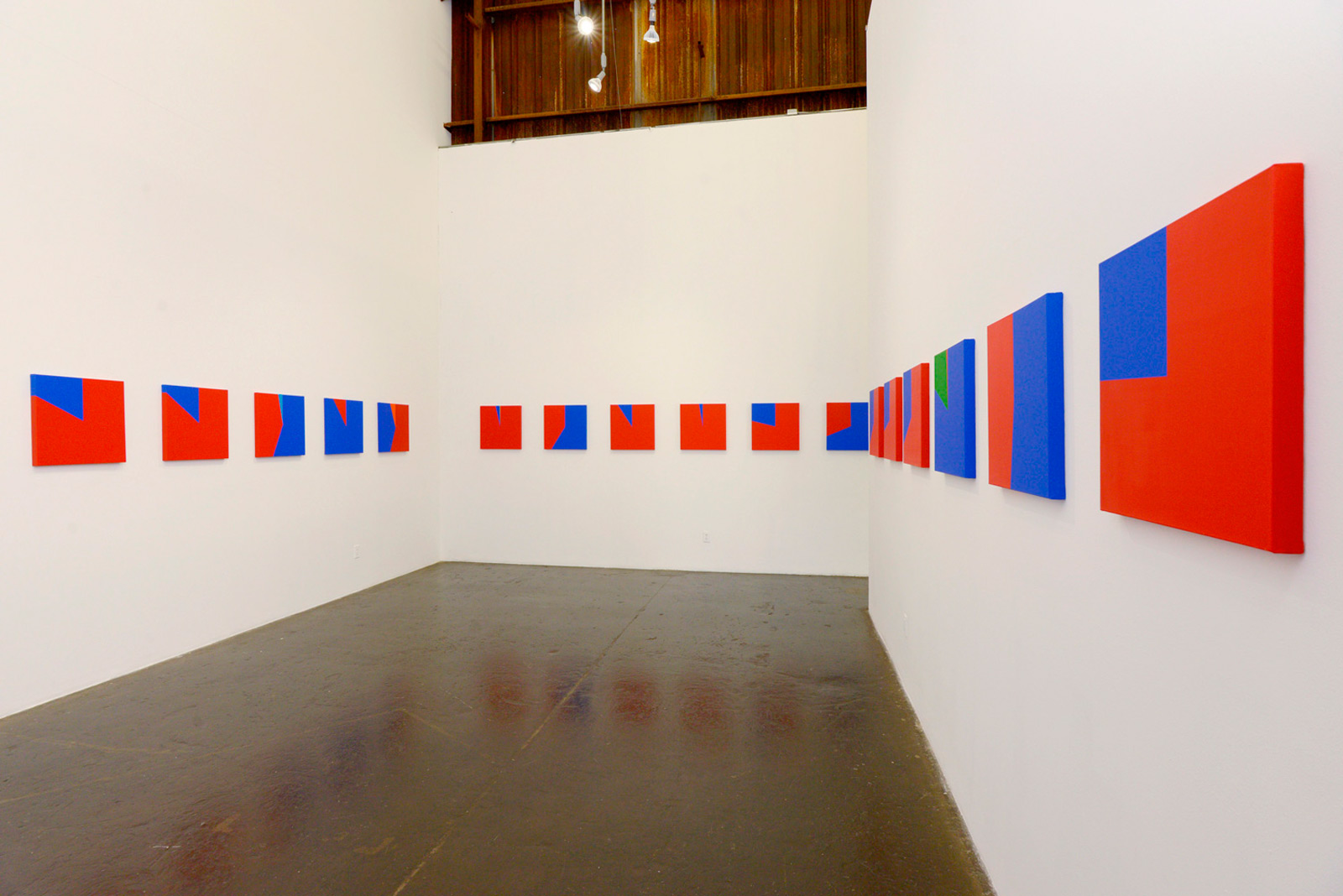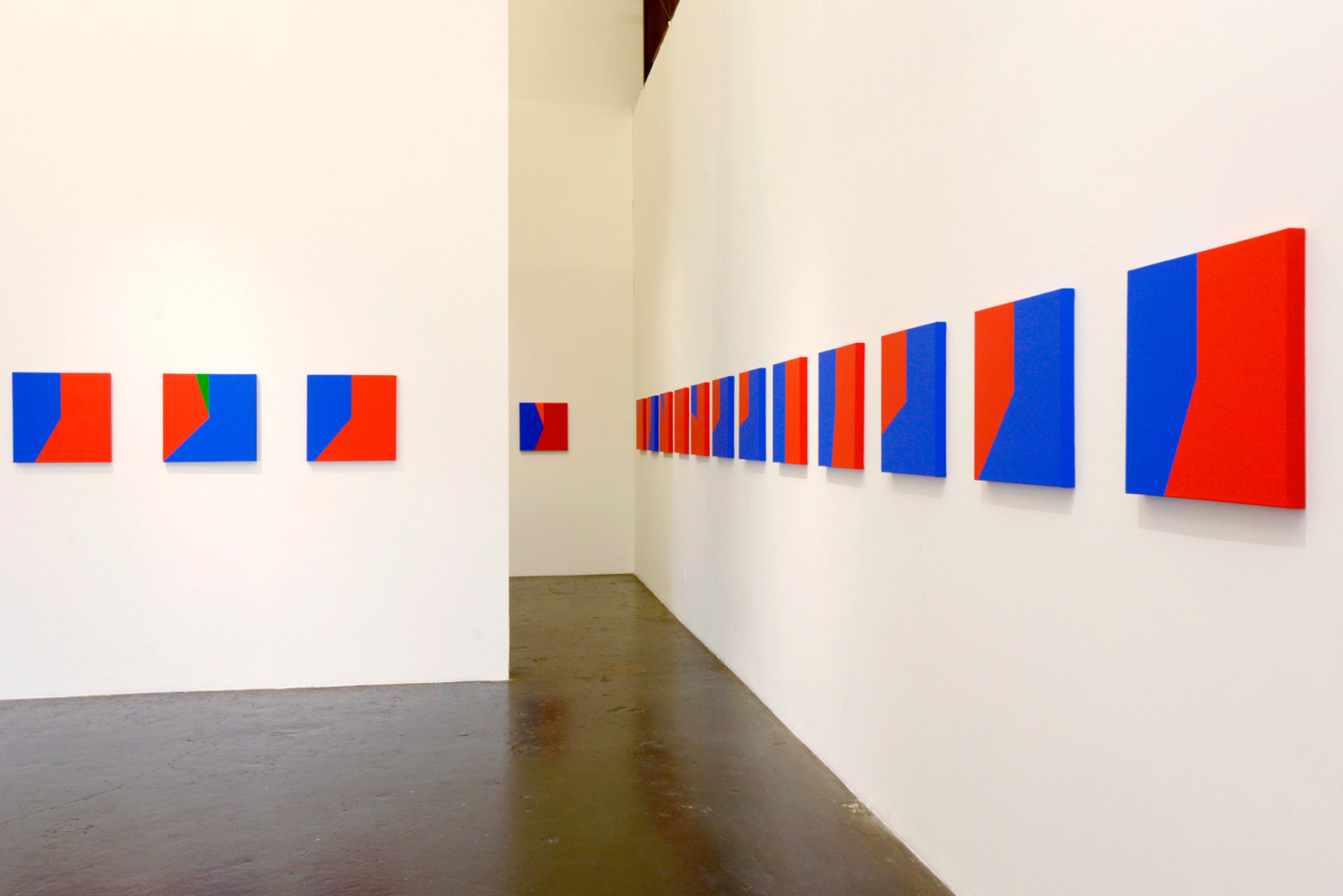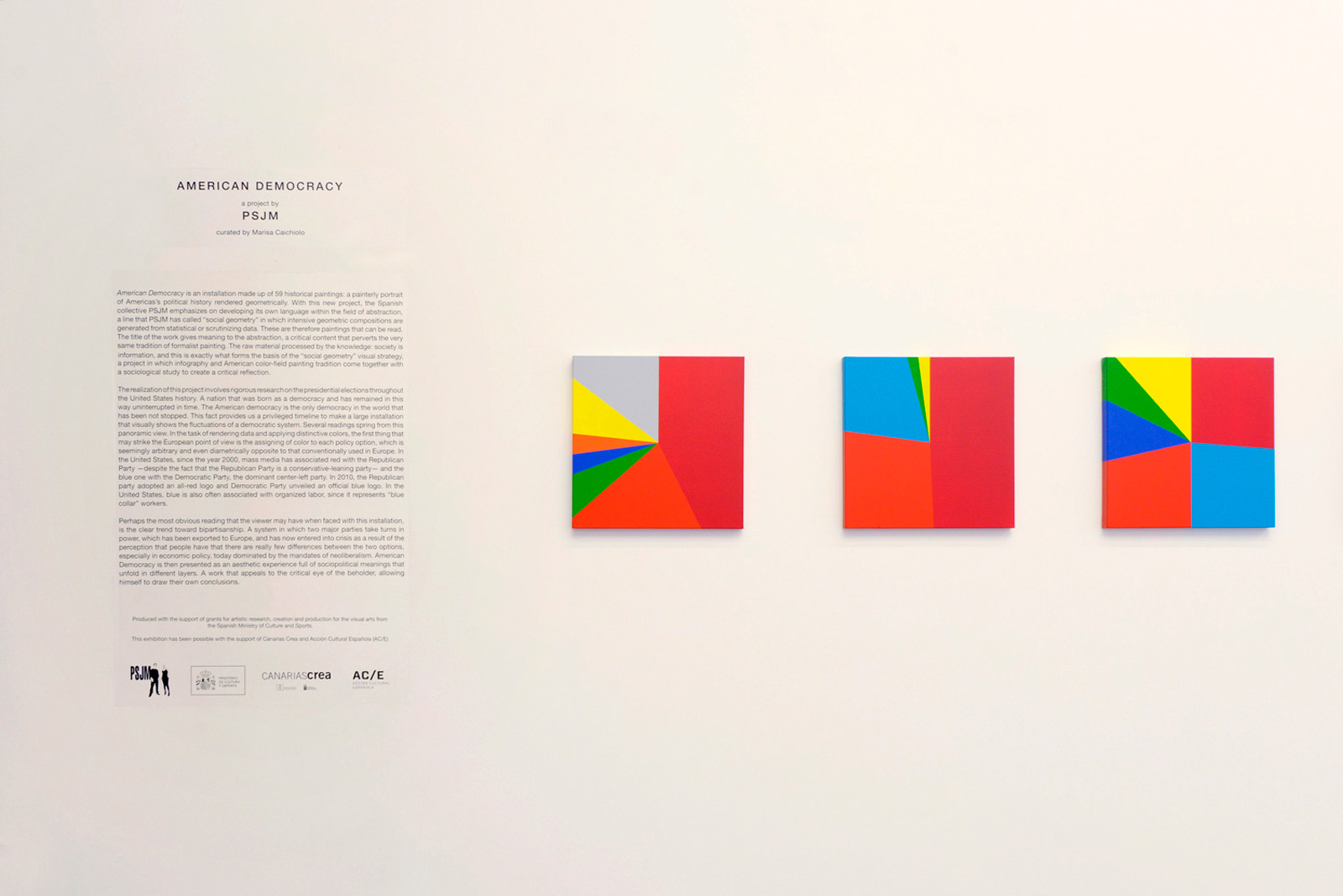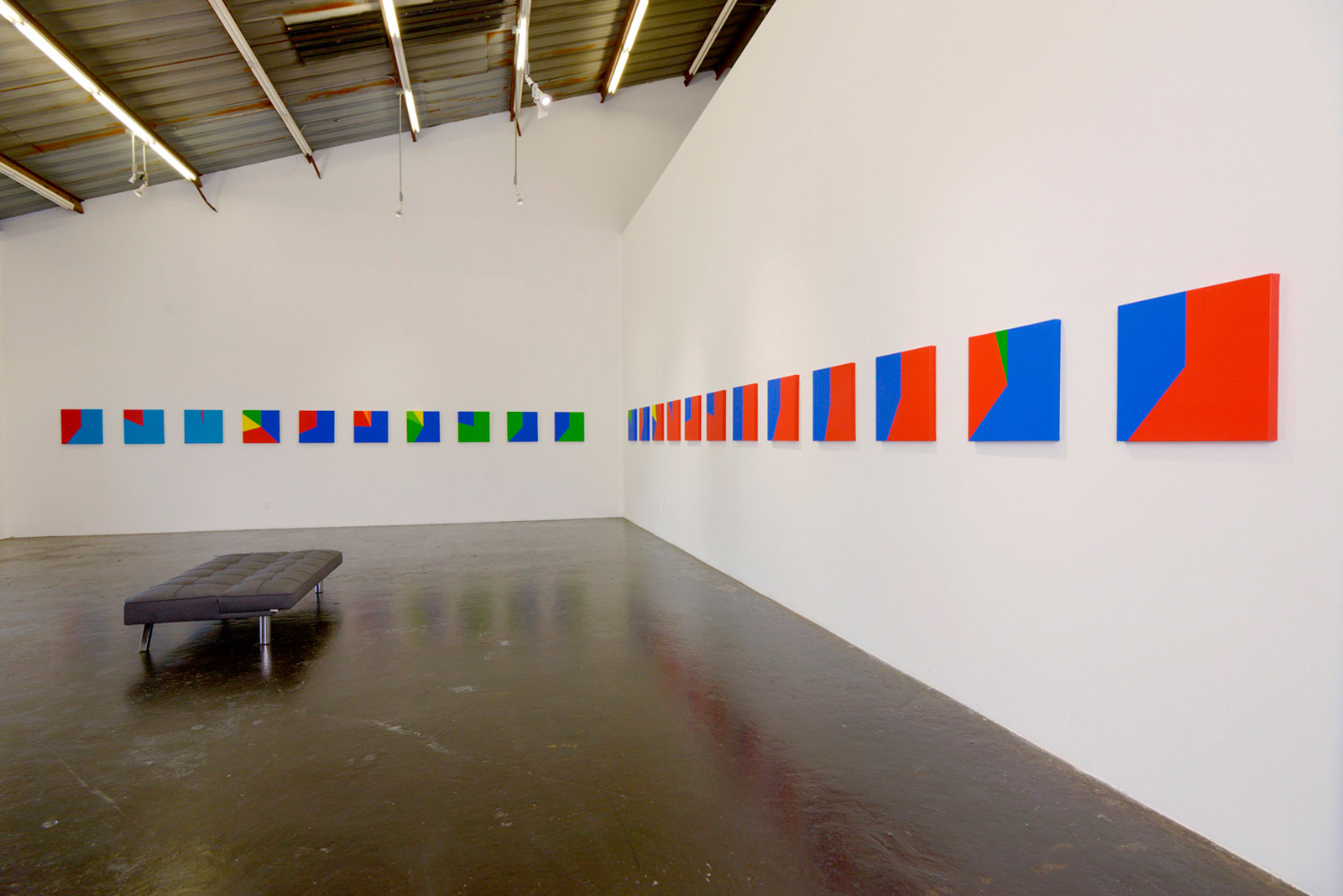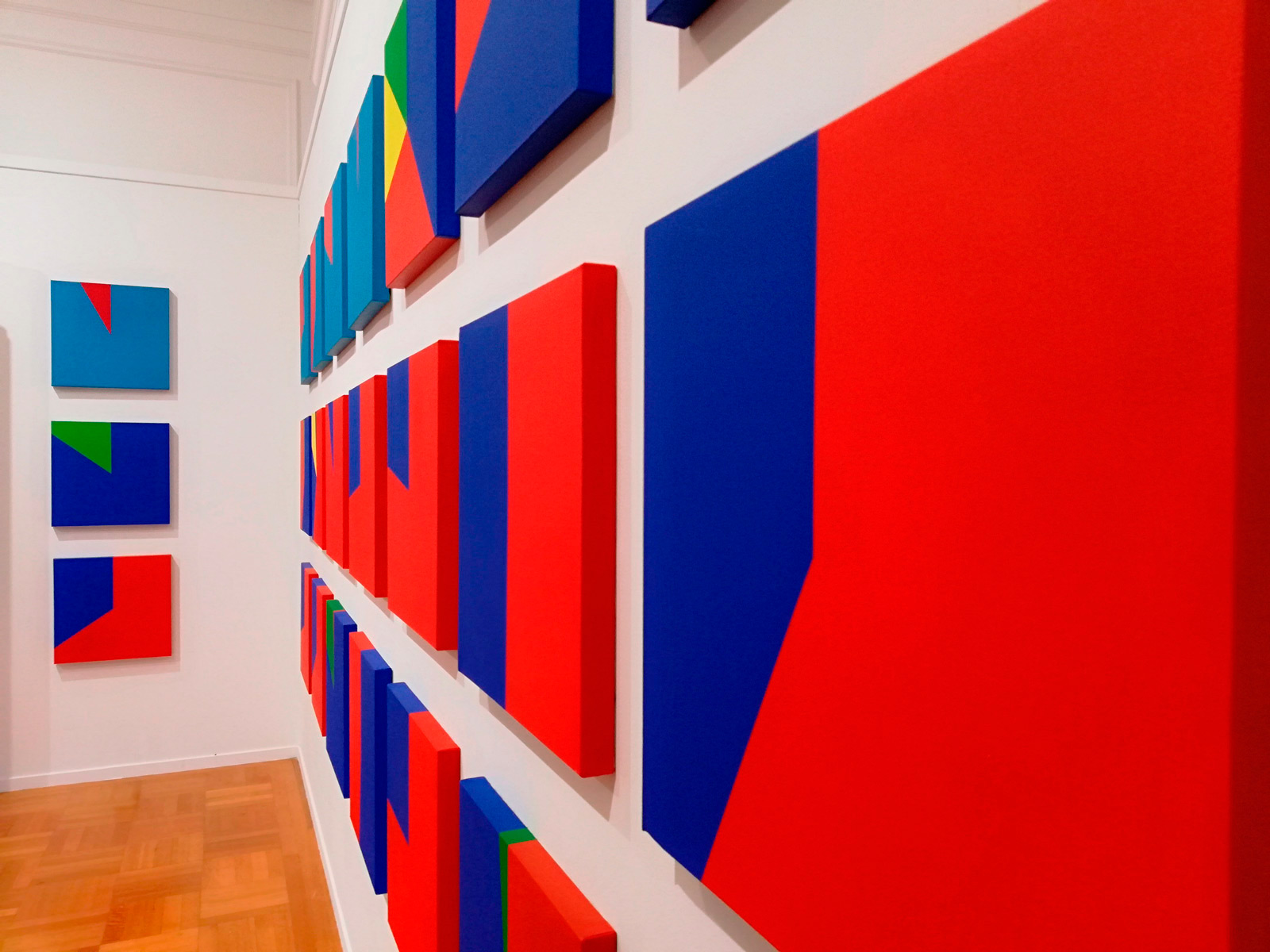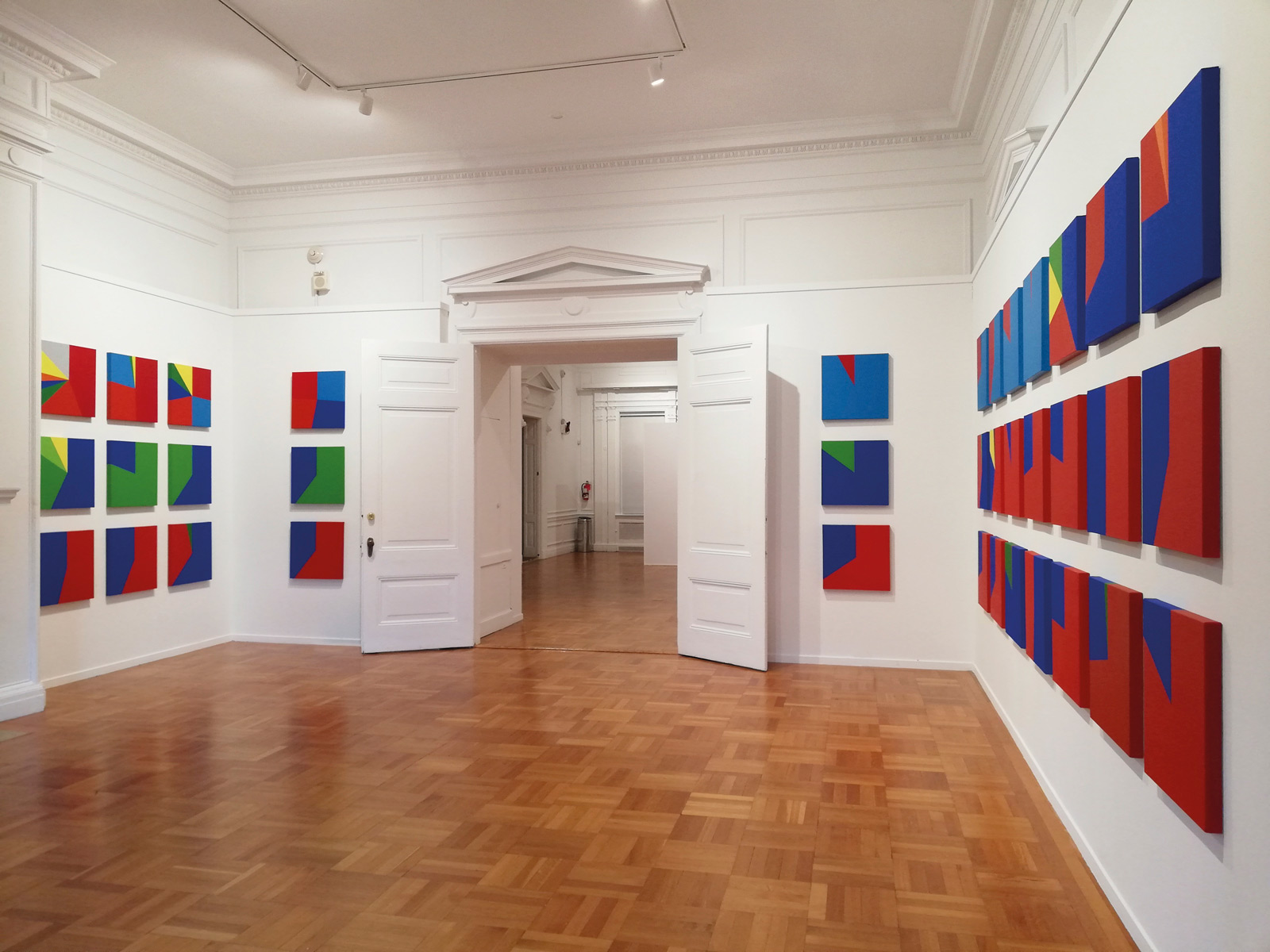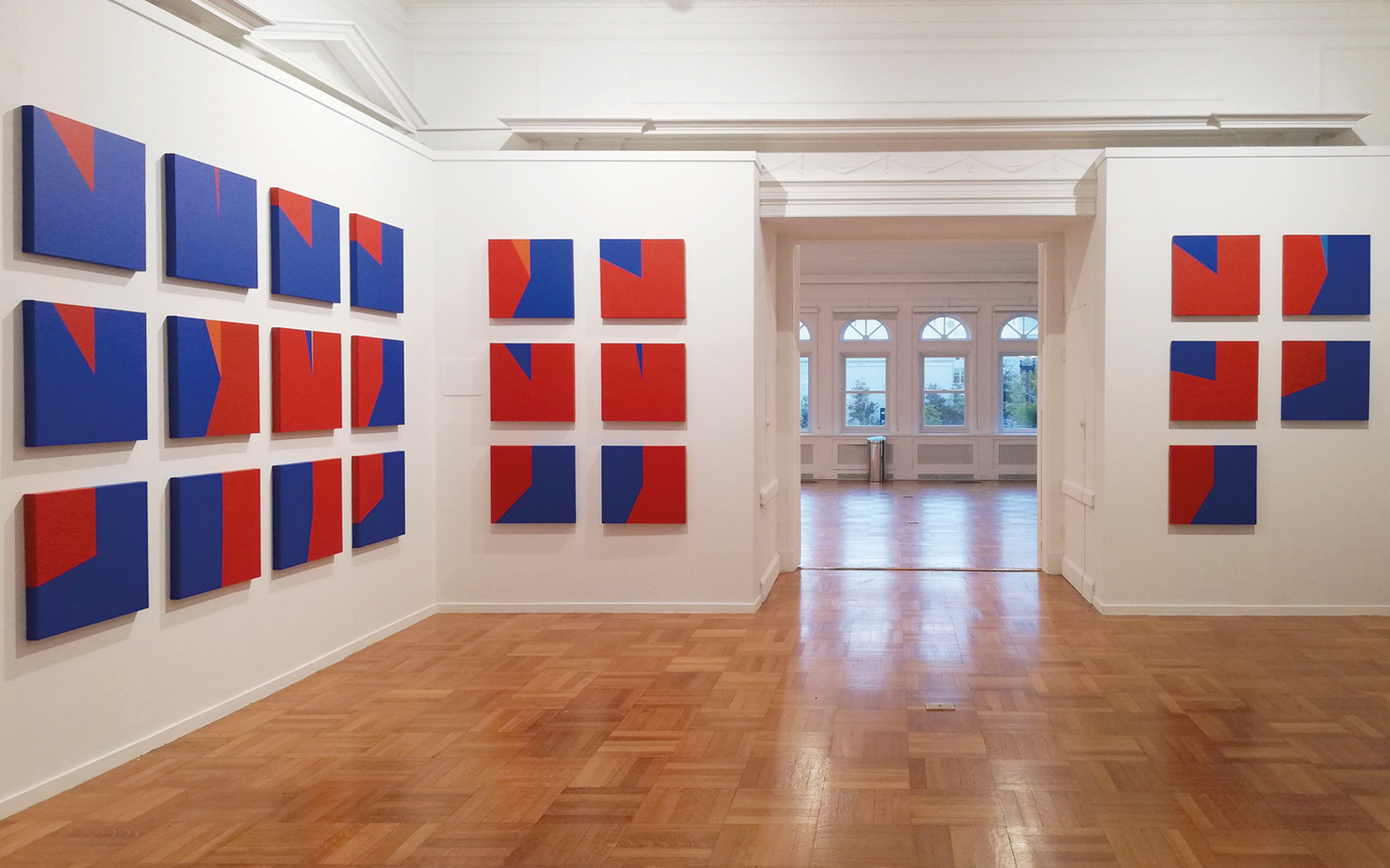American Democracy is an installation made up of 59 historical paintings: a painterly portrait of Americas’s political history rendered geometrically. With this new project, the Spanish collective PSJM emphasizes on developing its own language within the field of abstraction, a line that PSJM has called “social geometry” in which intensive geometric compositions are generated from statistical or scrutinizing data. These are therefore paintings that can be read. The title of the work gives meaning to the abstraction, a critical content that perverts the very same tradition of formalist painting. The raw material processed by the knowledge: society is information, and this is exactly what forms the basis of the “social geometry” visual strategy, a project in which infography and American color-field painting tradition come together with a sociological study to create a critical reflection.
The realization of this project involves rigorous research on the presidential elections throughout the United States history. A nation that was born as a democracy and has remained in this way uninterrupted in time. The American democracy is the only democracy in the world that has been not stopped. This fact provides us a privileged timeline to make a large installation that visually shows the fluctuations of a democratic system.



